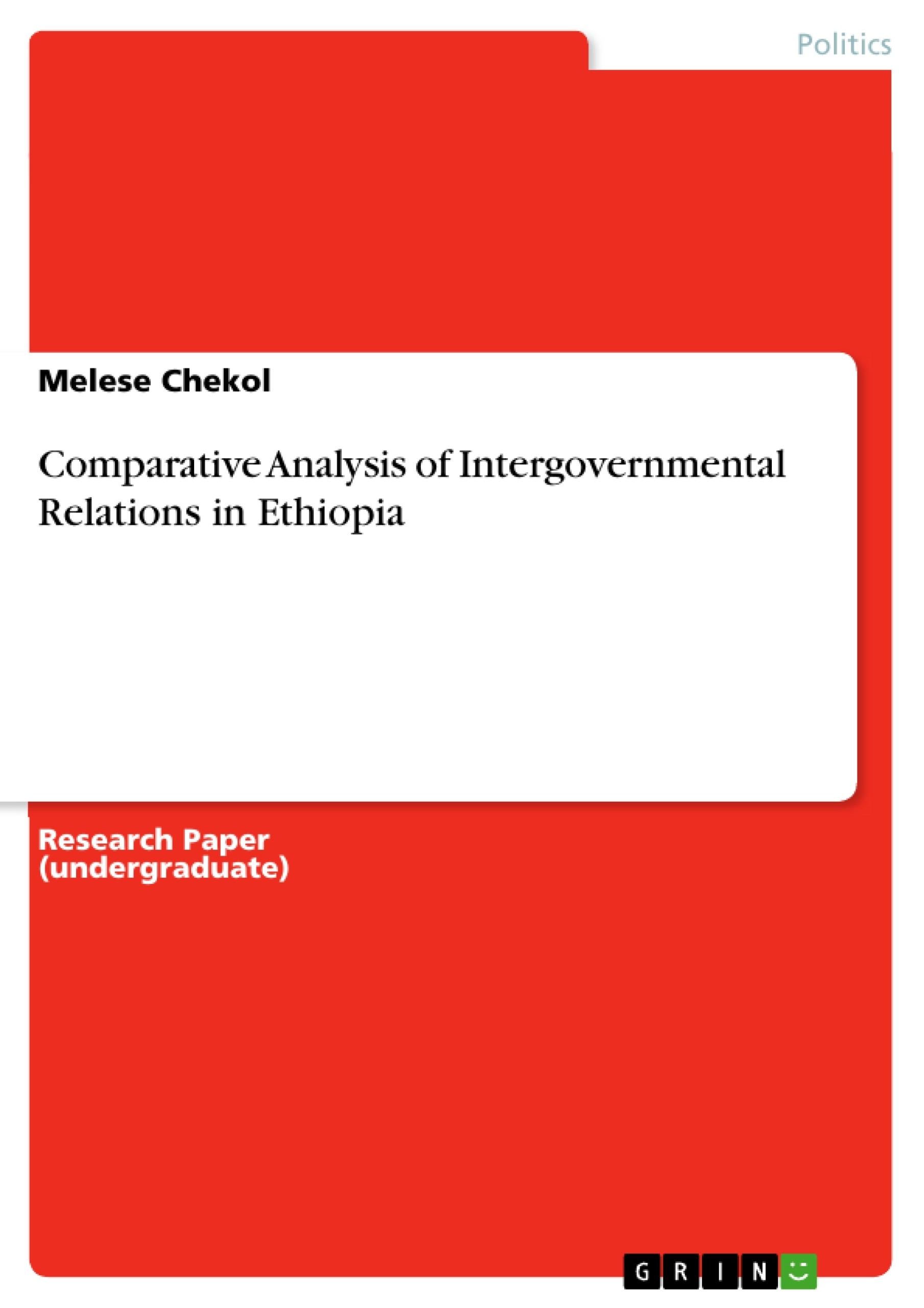Long struggle of nation, nationalities and peoples of Ethiopia against the military junta of Derg regime brought the coming power of Ethiopian People Revolutionary Democratic Front. The 1991 was a historic period in the history of the country that transferred from unitary system of government to the Federal system of government. The introduction of defacto-federalism in the transitional charter provides the right to self-determination up to and including secession as well as led the foundation for vertical, horizontal and normative relationships besides cooperation.
The promulgation of 1995 constitution gives a ground base of dejure federalism by providing powers to nations, nationalities and peoples as ultimate power holders.in this constitution 9 regional states are identified with their own sovereignty and administrative arrangements and they shall establish their own smallest administrative units as enshrined in Article 50 of FDRE constitution. The other issue that we discussed in this constitution is that the absence of formal intergovernmental relations/cooperation among federal government and regional states vertically, between regional states and within local governments horizontally. The absence of formal vertical and horizontal relationships does not mean that no relation at all. Relations through sectorial base, party channels and through institutions are held informally. Intergovernmental relations are one of the pillars for most federal states and unitary governments to facilitate their socio-economic and political as well as cultural developments
Inhaltsverzeichnis (Table of Contents)
- Introduction
- Definition of Intergovernmental Relations
- IGR in Ethiopia
- System/Form of government and IGR in Ethiopia
- Diversity and IGR
Zielsetzung und Themenschwerpunkte (Objectives and Key Themes)
This paper examines the intergovernmental relations (IGR) in Ethiopia, analyzing their development, formalization, and impact on the country's socio-economic and political landscape. The study explores the various mechanisms and processes involved in IGR, drawing comparisons with other federal systems.
- The transition from a unitary to a federal system of government in Ethiopia after 1991.
- The constitutional framework and its implications for intergovernmental relations.
- The role of political parties and institutions in shaping intergovernmental relations.
- The challenges and opportunities associated with managing diversity within a federal system.
- The comparative analysis of intergovernmental relations in Ethiopia with other federal states.
Zusammenfassung der Kapitel (Chapter Summaries)
- Introduction: This chapter sets the stage for the analysis by outlining the historical context of Ethiopia's transition to a federal system and the importance of understanding intergovernmental relations in this context.
- Definition of Intergovernmental Relations: This chapter provides a comprehensive definition of intergovernmental relations, drawing on various scholarly perspectives and emphasizing the different forms of interaction between different levels of government.
- IGR in Ethiopia: This chapter explores the specific context of intergovernmental relations in Ethiopia, analyzing the constitutional framework, the historical development of IGR, and the challenges posed by the country's diverse ethnic landscape.
- System/Form of government and IGR in Ethiopia: This chapter examines the role of the parliamentary system and the institutional processes involved in intergovernmental relations in Ethiopia. It highlights the significance of communication and cooperation between federal and regional governments.
- Diversity and IGR: This chapter focuses on the impact of diversity on intergovernmental relations in Ethiopia. It discusses the constitutional recognition of ethnic self-determination, the potential for both unity and conflict, and the importance of managing ethnic relations within the federal system.
Schlüsselwörter (Keywords)
This paper delves into the key concepts of intergovernmental relations (IGR), federalism, ethnic diversity, constitutionalism, and political systems. It explores the challenges and opportunities associated with managing diversity within a federal framework and provides a comparative analysis of IGR in Ethiopia with other federal states. The study aims to shed light on the complex interplay of these factors in shaping the political landscape of Ethiopia.
- Quote paper
- Melese Chekol (Author), 2015, Comparative Analysis of Intergovernmental Relations in Ethiopia, Munich, GRIN Verlag, https://www.grin.com/document/374857



